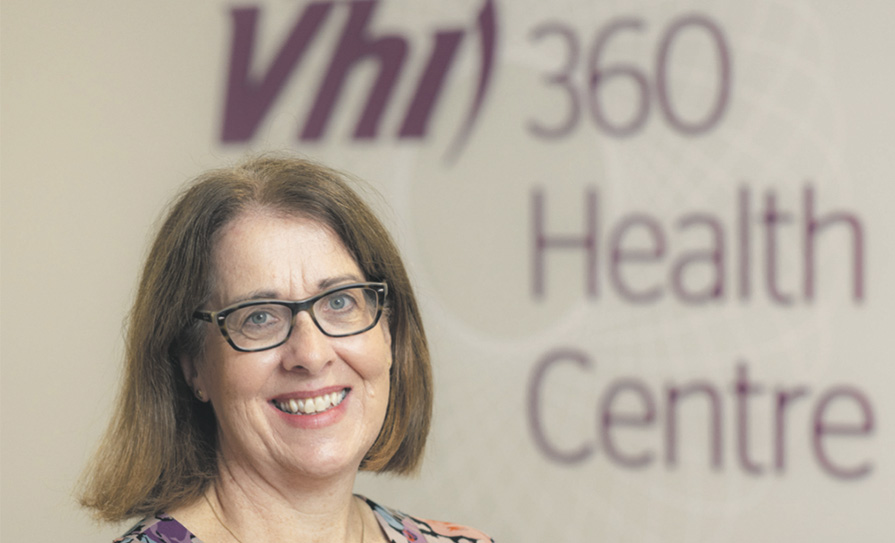John Reynolds speaks to Prof Martin Curley (PhD) about his solution for delivering an
electronic health record system for the health service
Prof Martin Curley (PhD), the former Head of Digital Transformation at the HSE, believes that a national electronic health record (EHR) system could be implemented much more quickly and at a fraction of a recently projected cost.
A 2022 HSE estimate indicated an EHR system could involve a decade-long roll-out with a potential cost of €2 billion. However, Prof Curley argues that a faster and more economical solution is achievable.
Now a Professor of Innovation at Maynooth University’s Innovation Value Institute, the former Intel executive has been working with a former NHS nursing director, Ms Maxine Radcliffe, on the solution. Ms Radcliffe moved to Ireland from London in 2018 to join the HSE as a senior clinical project manager.
Pilot
Initiated five years ago by HSE regional manager Ms Concepta de Brun, and supported by a UK-based firm, the pilot EHR scheme is already being used for about 15,000 patients, some of whom have complex needs.
“This system enables information-informed, real-time care for people. It operates over seven fixed HSE sites and over 150 floating clinics, facilitating 50 HSE clinicians and social care workers in south Dublin, west Wicklow, and Kildare. Both Maxine and Concepta deserve great credit for their drive in establishing this solution,” Prof Curley, who left the HSE in early 2023, told the Medical Independent (MI).
“It’s a great example of architectural innovation, informed by design-thinking based on the kinds of patients being supported, where different open-source components have been integrated into a high-performing digital health platform.
“Many of the patients have lots of vulnerabilities, and the system more than adequately meets their needs, which is promising for broader adoption across a less-challenged population,” he added. Among the patients are Ukrainian refugees, homeless people, and international protection applicants.
Cost
The cost advantage of such a system could be considerable, he suggested. If rolled out nationally the secure, free, non-commercial, and well-established open-source platform could save the HSE hundreds of millions when compared to an incremental alternative approach to digital transformation.
According to an estimate discussed by the HSE in 2022, the most expensive approach involving the latter would cost more than €2 billion. In May of this year, Digital for Care: A Digital Health Framework for Ireland 2024-2030 was published. The document admits the implementation of a national EHR system will be a “challenge”, “costly”, and is likely to represent the single largest area for investment in digital health across the health system.
“A business case, aligned to investment guidance, will be developed, leveraging much of the work that has been done to date for other EHR programmes,” according to the framework.
“This will set out the requirements for funding and resourcing of these programmes and will be used by the Department of Health and the HSE in their engagements with the Department of Public Expenditure NDP Delivery and Reform to advise Government and inform the annual service plan and the national development plan.”
Complaint
A common complaint among medical staff is that they often have to log into different software programmes or health IT systems to repeatedly enter the same patient details. Sometimes, after switching from one system to another, additional information is also required. “Consultants, doctors, and nurses are perpetually frustrated by these kinds of IT issues,” Prof Curley told MI.
However, he noted that the piloted cloud-based EHR system, which can be accessed through any standard Internet browser, would eliminate this issue once connected to the HSE network and authenticated.
The proposed system also features secure communication and file sharing services.
There are so many digital change-motivated clinicians, but who are held back by a lack of HSE digital leadership, bureaucracy, and cohesion
“At one stage before the pandemic, I worked on a ‘living lab’ pilot scheme involving a shared care record [SCR] for 1,300 patients in Cork and Waterford.
“In the early days of Covid, we proposed to introduce that system for every patient over the age of 65 across Ireland and it would have provided vital information to clinicians treating these older patients remotely.”
However, Prof Curley said it was blocked by senior HSE management. That SCR could have saved lives, he believes, as could an even more advanced EHR system. “In Ireland, we have about three million medication errors a year, which is probably one error per patient per day. In the US, for example, the third most common cause of death in its health system is medical error.
The Organisation for Economic Co-operation and Development’s Health at a Glance report, published last November, ranked Ireland the worst of 22 countries for linking different health data. The country also ranked last for data governance, including controls for privacy and security.
Politicians and healthcare workers in Ireland appear to be in agreement that improved digital health is critical to health reform and underpins the aims of Sláintecare. Yet in practice, progress is slow, and often expensive.
According to a number of sources working in digital health in Ireland, the HSE also has a tendency to rely heavily on management consulting firms, and sometimes other external IT contractors. That prevailing attitude to procurement often takes a top-down approach, with consultants or contractors problem-solving late in the development, then adding cost and time involving training frontline staff towards the end of a project.
Speaking last year, one former HSE board member, who asked not to be named, said that in general, procurement of technology and software across the public sector was “hopeless”.
“The process tends to be very slow and not agile.”
Tenders can favour larger companies by requiring high financial thresholds that exclude more innovative small-to-medium enterprises and early-stage businesses, industry sources added. In contrast, pilots in living labs focus more on end-user needs, addressing and adapting to problems earlier in the process, resulting in fewer issues in later iterations.
Fragmentation
The current EHR landscape is fragmented and reflects the incremental approach taken so far. Maternity hospitals have EHR systems provided by US giant Cerner, as does St James’s Hospital, Dublin. Meanwhile the new National Children’s Hospital has signed an agreement with Cerner’s major US rival, Epic.
Separately, a third provider, InterSystems, is providing EHRs for the National Rehabilitation Hospital and the National Forensic Mental Health Service. The same company will also provide a digital interoperability system at the new National Children’s Hospital.
Sources have also pointed to the fact that while the Health Performance Visualisation Platform tracks patient journeys through hospitals and allows productivity to be monitored, EHR systems can usually fulfil these requirements, which is another case of duplication.
“Having seen the inertia and cultural resistance to innovating and deploying technologies that often prevailed in the HSE when I worked there, it became clear to me that the best chance of driving change was from the outside-in and this is what the leading academic literature suggested,” Prof Curley said.
“There are so many digital change-motivated clinicians, but who are held back by a lack of HSE digital leadership, bureaucracy, and cohesion,” he added.
“Another reason this can work nationally is with the team, we’ve integrated all the component parts – which we aren’t disclosing at this time – in a whole new way. It’s perhaps a bit like how Apple transformed the music industry with the integration of the iPod, MP3 music format, and their iTunes system.
“We and many clinicians believe this is far superior to the current ways of working, which are in some cases primitive, relying on paper files for health records.
“The ability for a clinician to see a detailed history of all the encounters a patient has had with the health system and an accurate current medication list would be game-changing here in Ireland, but is commonplace in many other developed countries.”













Leave a Reply
You must be logged in to post a comment.